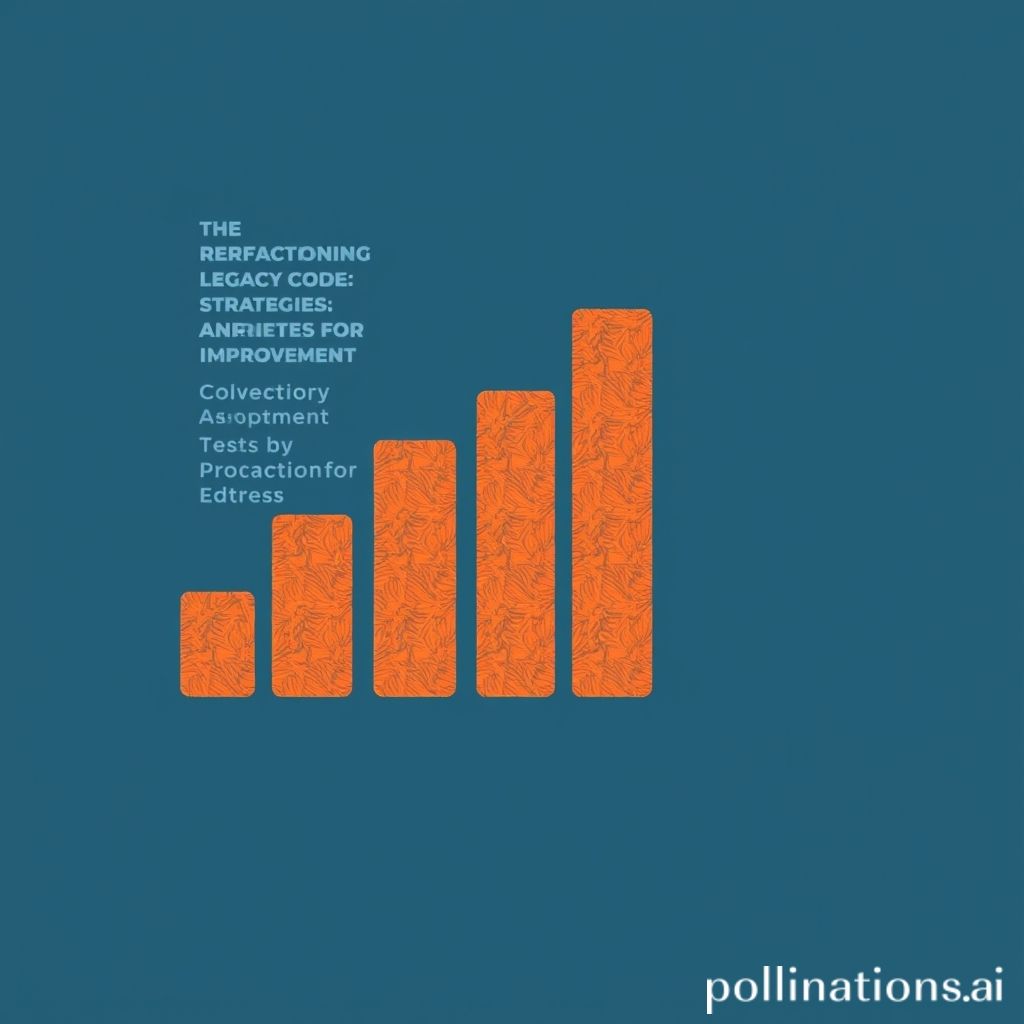
Refactoring Legacy Code: Strategies for Improvement
Legacy code, often defined as code without tests or code that is difficult to understand and modify, presents a significant challenge for software development teams. While it may be functional, its complexity and lack of maintainability can hinder innovation, increase bug rates, and slow down development cycles. Refactoring, the process of improving the internal structure of existing code without changing its external behavior, is crucial for bringing legacy code into a more manageable and sustainable state.
Identifying Refactoring Candidates
The first step in refactoring legacy code is identifying areas that would benefit most from improvement. Look for the following characteristics:
- Code Smells: These are patterns in the code that suggest deeper problems. Examples include long methods, duplicate code, large classes, and feature envy (a method accessing data from another object more than its own).
- High Cyclomatic Complexity: This indicates a method with many conditional branches and complex logic, making it difficult to understand and test.
- Lack of Test Coverage: Code without adequate tests is risky to modify, as you can't be sure that your changes haven't introduced regressions.
- Frequent Bug Reports: Modules or classes that consistently generate bug reports are prime candidates for refactoring.
- Performance Bottlenecks: Profiling the application can reveal areas where inefficient code is slowing down performance.
Strategies for Refactoring
Once you've identified the areas to refactor, consider these strategies:
- Start Small and Incrementally: Don't attempt to rewrite large portions of code at once. Focus on small, manageable changes and test frequently.
- Add Tests First: Before making any changes, write unit tests to cover the existing functionality. This will ensure that your refactoring efforts don't introduce new bugs. Use techniques like Characterization Tests to understand the existing behavior.
- Extract Method: Break down long methods into smaller, more manageable methods with clear responsibilities.
- Extract Class: Move related fields and methods from a large class into a new class to improve cohesion and reduce complexity.
- Replace Conditional with Polymorphism: If you have a complex conditional statement based on object type or state, consider using polymorphism to delegate behavior to different classes.
- Introduce Design Patterns: Applying appropriate design patterns can improve the structure and maintainability of the code. Common patterns for legacy code include Factory, Strategy, and Template Method.
- Use Automated Refactoring Tools: IDEs often provide automated refactoring tools that can help with tasks like renaming variables, extracting methods, and moving classes.
Best Practices for Refactoring
To ensure a successful refactoring effort, follow these best practices:
- Work in Small Teams: Smaller teams can communicate more effectively and maintain a shared understanding of the code.
- Code Reviews: Have other developers review your changes to catch potential problems and ensure that the code meets the team's standards.
- Continuous Integration: Integrate your changes frequently to catch integration issues early on.
- Communicate Regularly: Keep stakeholders informed of your progress and any challenges you encounter.
- Don't Break the Build: Ensure that your changes don't break the build or introduce new bugs.
- Document Your Changes: Document the changes you've made to the code to help other developers understand the new structure.
Refactoring legacy code is a challenging but essential task for maintaining and improving software systems. By following these strategies and best practices, you can gradually transform legacy code into a more manageable, maintainable, and valuable asset.
